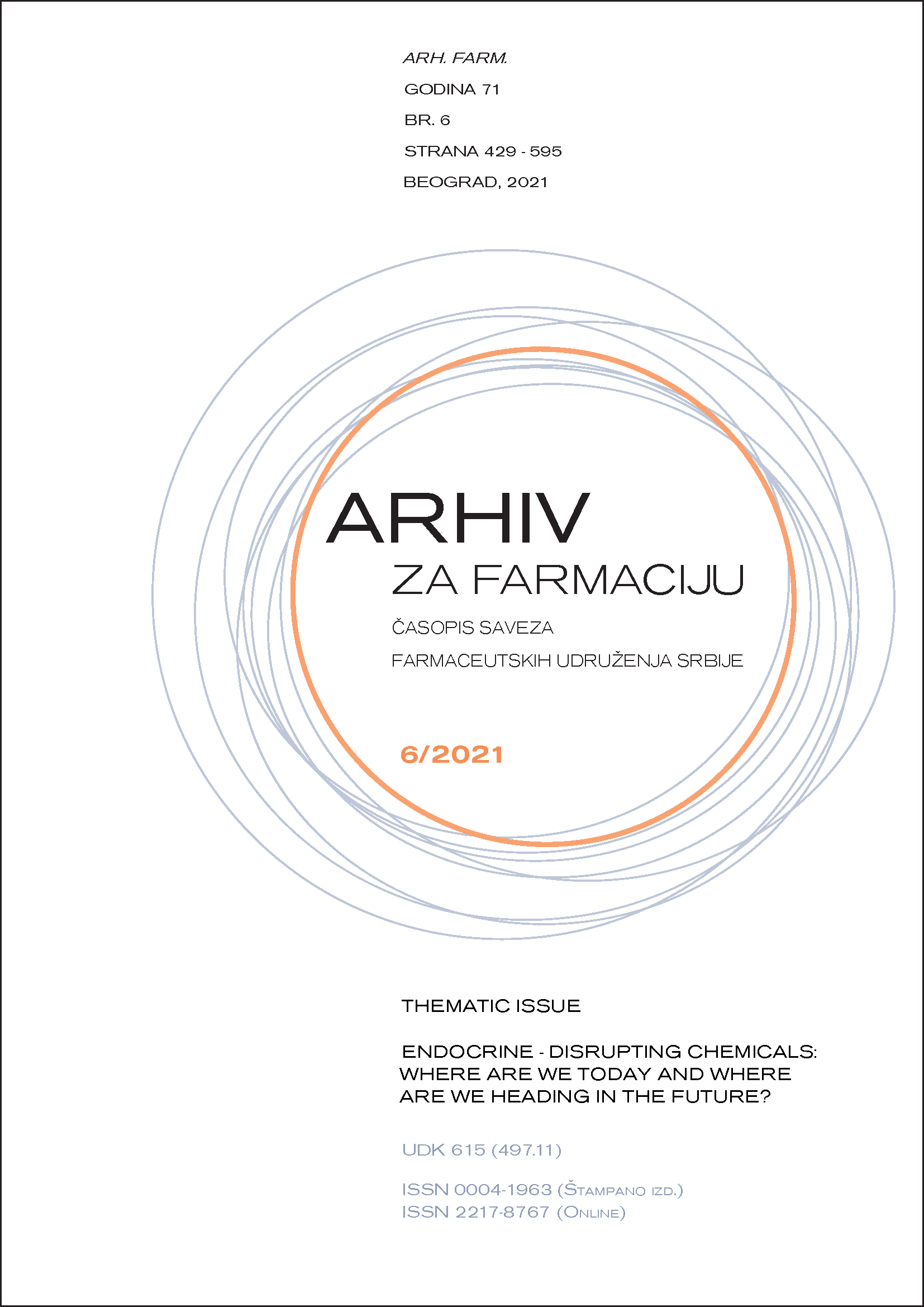
A Word from the Guest Editor
Nowadays, the exposure to endocrine-disrupting chemicals (EDCs) is considered to be one of the major health concerns worldwide. Indeed, recent studies have associated exposure to these chemicals with a wide spectrum of human disorders. Although the vast number of clinical, experimental, in vitro and in silico studies have notably deepened and enhanced our knowledge on the puzzling molecular mechanisms involved in endocrine disruption phenomena, various issues still need to be further addressed. Hence, the aim of this special issue entitled “Endocrine disrupting chemicals: where are we today and where are we heading in the future?” was to shed some new light on the enigmatic role of EDCs in human disease risk and pave the way for new hypothesis development in the field.
This Special Issue consists of 7 review articles and one original research paper. Authors of the papers are well-established international experts and leaders in the field.
Exposure to persistent organic pollutants (POPs) in the context of endocrine disruption has been steadily raising significant public health concerns. One important group of these chemicals, per- and poly-fluorinated alkyl substances (PFAS) are coming to the forefront as substances that can pose a serious threat to human health and living organisms due to their high persistence, transport potential and tendency to accumulate in biota. In their paper, Panieri et al. briefly summarize PFAS properties, uses and environmental fate while focusing on their effects on the human endocrine system. The association between the exposure to POPs and adverse health effects in the Spanish population has been reviewed in the paper by González and Domingo. Moreover, this study also highlights the importance of conducting human biomonitoring (HBM) studies as a tool for establishing possible association between exposure to chemicals and toxic effects on endocrine health. The possibility of using data obtained from HBM studies in analysing the type of dose-response relationship on the model of the association between toxic metal cadmium blood levels and estrogen levels was assessed in the original research paper by Buha et al. More and more data suggest there may be a relation between lipophilic pesticides with low biodegradability and changes in the reproductive functions and parameters of male and female animals. Anlar et al. analysed the strength of pesticide exposure-outcome relations regarding these possible endocrine-disrupting effects of pesticides. Detailed mechanisms involved in the endocrine-disrupting activity of mancozeb in its main endocrine tissue targets are systematically studied in the review by Skalny et al. Reproductive disorders in males have been frequently linked to exposures to certain chemicals. Erkekoglu et al. reviewed possible involvement of EDCs in the development of testicular dysgenesis syndrome, mainly focusing on phtalates. Maternal exposure to a mixture of various EDCs may impact the risk of health disorder and disease development in the adulthood of her offspring(s). Pizent overviewed the adverse effects of EDCs during this critical developmental window, focusing on the current challenges that researchers continue to face in their efforts to better understand the health risk associated with EDCs exposure in early life. Lastly, the controversial issue of the positive role of probiotics for human health from the perspective of their effects in the conditions of EDCs exposure has been reviewed by Sevim and Kara.
I would like to extend my sincere gratitude to all authors who made the favourable decision to contribute to this issue of Archives of Pharmacy. Finally, I would like to express my heartfelt thanks to Editor-in-Chief, Prof. Radica Stepanović Petrović, for inviting me and honouring me with the chance to be the Guest Editor of this issue.
Guest Editor
Aleksandra Buha Djordjevic, PhD, Associate Professor
University of Belgrade - Faculty of Pharmacy
Department of Toxicology “Akademik Danilo Soldatović“
